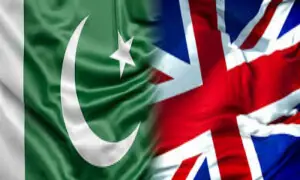The Story of Pakistan Navy Submarine Hangor which changed the course of 1971 War
On 9 December 1971 Pakistan Navy submarine Hangor while patrolling in its allocated area off the Indian Khatiawar coast under the command of Commander Ahmed Tasnim (later Vice Admiral) located, tracked and fired a homing torpedo at the Indian anti-submarine frigate Khukri. The torpedo hit the frigate on its magazine which exploded and the ship sank in two minutes along with its crew of 18 officers and 176 sailors.
In order to understand the significance of this operation it will be necessary to review briefly the situation in which the action took place. Until the sinking of Khukri on 9 December the war at sea was not going well for the Pakistan Navy. On the outbreak of hostilities Indian Navy carried out two attacks by OSA missile boats on 4 and 6 December 1971. In the first attack PNS Khaiber and PNS Muhafiz received missile hits and sank. In the second attack PNS Dacca, the replenishment tanker of Pakistan Navy, which happened to be at Manora anchorage, received a missile hit but miraculously survived by the courage and vigilance of its commanding officer and the crew.
Two neutral merchant ships Harmattan and Gulf Star at Manora anchorage also received a missile hit each. The former sank but the latter survived. Incidentally, sinking of merchant ships in this manner without first placing the crew at a safe place was in grave violation of Geneva Conventions.
The loss of these two ships caused some unrest in a section of naval personnel. It is important to understand the cause of this unrest for it is largely responsible for the creation of the myth that Pakistan Navy was ‘mauled’ in the 1971 war. It was not the loss of these ships per se as the manner in which they were lost that caused unrest i.e. the ships had no means to defend against a missile attack or retaliate in any manner whatsoever.
It should be noted that officers and sailors were trained for and expected a classical gun battle to take place with the Indian fleet in which maneuver and accuracy of gunfire would determine the outcome. Instead all that transpired was appearance of a light followed by a hit and an explosion with no enemy in sight anywhere.
Although naval planners were aware of the possibility of use of missile boats, which were basically defensive vessels, in the offensive role (by extending their range through fueling at sea), this factor did not receive due weightage. Consequently the deployment of the fleet did not fully take into account the severe handicap imposed by the guns of our ships being outranged by a wide margin by the enemy missiles.
It would be recalled that in the 1965 war Indian Navy had been totally neutralized by Pakistan Navy which acquired complete control over the North Arabian sea when the Indian Navy failed to show up despite a provocative bombardment of Dwarka port. It remained bottled up throughout the war in Mumbai harbor because of the threat posed by a single submarine that we then possessed.
In the period between the two wars the Indian Navy underwent significant expansion and modernization of its fleet. Important additions in this period were four submarines and six OSA class guided missile boats from the Soviet Union. In the same period Pakistan surface fleet consisting of World War II vintage ships was allowed to languish into obsolescence. The only redeeming feature was the acquisition of 3 Daphne class submarines from France.
Despite all the advantages in shape and size the Indian Navy succeeded in sinking just one destroyer and one minesweeper in the two missile attacks. The Indian carrier group operating in the Bay of Bengal destroyed only one patrol craft out of a total of four stationed in East Pakistan, even though there was virtually no opposition at sea from the PAF. The total losses of Pakistan Navy in the War were one destroyer, one minesweeper and a patrol craft.
After the sinking of Khukri by Hangor losses in terms of major warships evened out. If the Indian Navy with all the advantages in quality and quantity was able to destroy in addition a patrol craft and a minesweeper it was no great achievement in terms of the result of tactical operations at sea. Moreover, the evening out of the score was not the only feature of the success of the submarine attack.
After an attack on a warship and particularly so an anti-submarine frigate, the submarine is extremely vulnerable, having lost the advantage of stealth because its position becomes known to the enemy and forms the datum on which the anti-submarine search is based. Instead its many limitations makes the task of evading its pursuers extremely complicated.
A submarine’s motive power when submerged is supplied by its batteries. These batteries have to be frequently charged for which it must surface or snorkel and thus becomes vulnerable to detection by enemy aircraft and ships. A submarine’s submerged speed in comparison to surface ship is much slower. It is further restricted because the higher it’s submerged speed the faster its batteries are discharged and sooner it is required to surface or snorkel. In short these and many other contending requirements generated by submarine’s limitations need to be reconciled in an environment pregnant with intense enemy activity.
After the loss of Khukri the entire antisubmarine assets of the Western Indian Fleet were thrown into a massive hunt for the submarine for the next four days day. More than 150 underwater projectiles were fired in this period and there were some close calls. The submarine however, was able to evade its pursuers and returned back to Karachi unharmed on 18 December.
Both the attack on an anti-submarine frigate in shallow waters and its subsequent escape unharmed speaks volumes for the professional skill, courage and patience of the crew of the submarine. This was a turning point in the war at sea because after the attack “Operation Triumph” the third missile attack which was to be launched on 10 December was cancelled and thereafter no further missile or other attacks could be carried out by the Indian Navy on Pakistan Navy ships and Karachi harbor.
The performance of the Pakistan Navy in the 1971 War was creditable under the under prevailing situation with Hongor making the most significant contribution towards that end.




















Comments are closed on this story.